Arosa – a relatively new potato variety. Farmers highly value it for its hardiness, quick adaptation to weather conditions, and resistance to many common potato diseases. In this article, you will find a description of the Arosa potato variety, photos, and cultivation recommendations.
Table of contents
Arosa Potatoes: Variety Description
The Arosa variety was developed by German breeders from the company Uniplanta Saatzucht. This variety appeared on the market in early 2009.
Photo of Arosa potatoes.
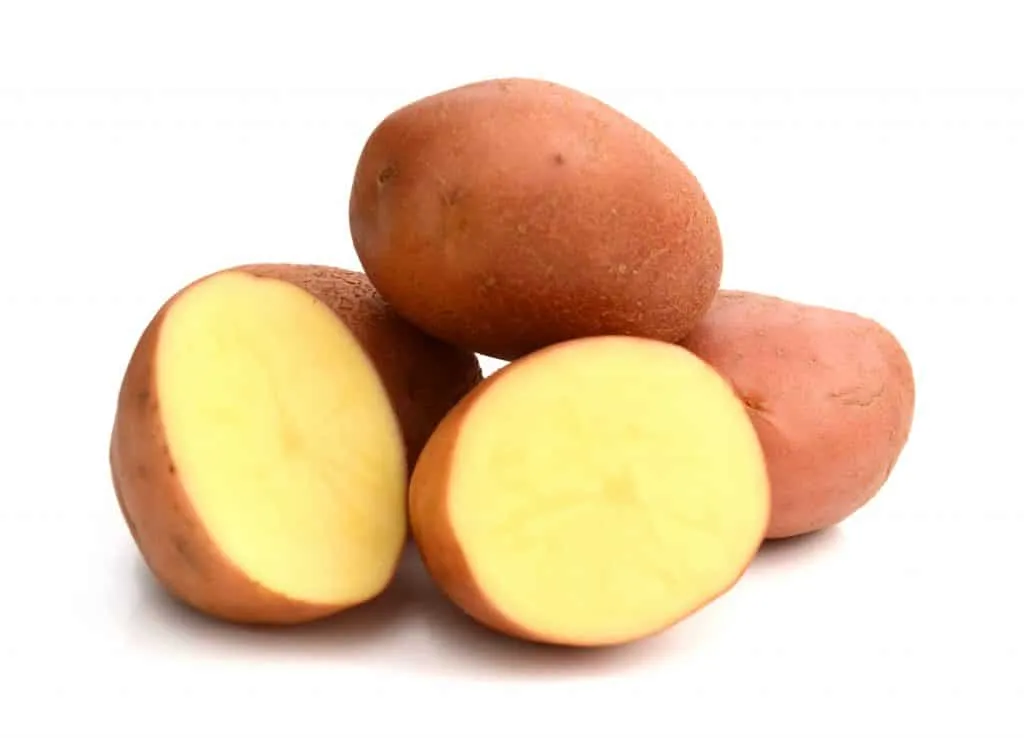
Chemical Composition, Micronutrients, and Vitamins
Potatoes contain fiber, glucose, sucrose, mineral salts, ascorbic acid, B vitamins, carotenoids, as well as proteins and carbohydrates. The starch content in the Arosa variety is up to 14.3%.
This potato belongs to culinary type B. The tubers are suitable for baking, frying, stuffing, and use in salads.
Ripening Period
The ripening period is about 60 days from sprouting to harvest. Young tubers can be collected 45-50 days after germination.
Yield
With proper planting and care, up to 50 tonnes of potatoes can be harvested per hectare. On average, each plant produces up to 15 tubers.
Disease Resistance
The variety is resistant to nematodes, potato canker, mosaic viruses, fusarium wilt, but less resistant to late blight, silver scab, and black scurf. However, with proper preventive measures, these diseases can be avoided.
Tuber Characteristics and Appearance
The tubers are oval, elongated, weighing 80-150 g. The skin is thin and reddish. The eyes on the surface are small.
The flesh is bright yellow and does not darken during cooking.
Gardeners and chefs rate its taste at 4.5 out of 5.
Suitable Regions and Climate Requirements
This variety is best suited for cultivation in regions with a temperate climate. In Europe, the highest yields are achieved in countries like Germany, France, and Poland, where conditions are optimal for growth.
Advantages and Disadvantages
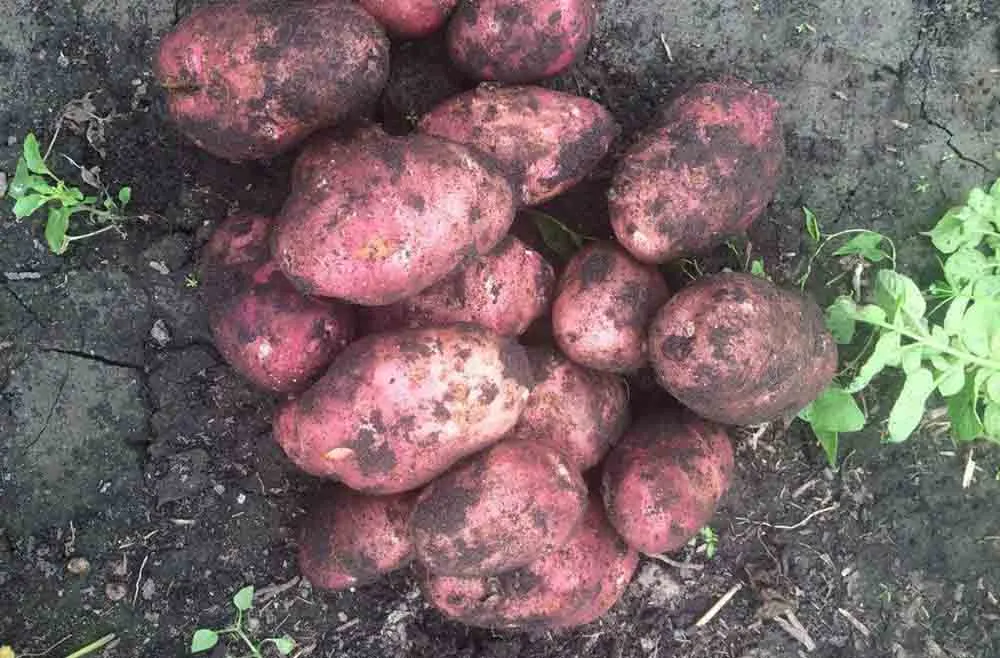
Advantages of the Arosa variety:
- High yield potential;
- Excellent drought tolerance – breeders claim this variety adapts well to different weather conditions, making it suitable not only for temperate climates but also for southern regions;
- Attractive market appearance;
- Good transportability (damage resistance up to 95%), making it profitable for commercial farming;
- Versatility in cooking;
- High taste quality;
- Resistance to many bacterial and viral diseases.
The disadvantages are fewer. The main one is susceptibility to late blight and scab. Additionally, excessive use of mineral fertilizers can reduce yield.
Differences from Other Varieties
Key differences:
- High resistance to viral diseases;
- Ability to grow without additional irrigation.
Planting and Growing Tips
Choose sunny, well-ventilated areas on elevated ground for planting.
Agronomists also recommend arranging beds in a north-south direction.
Soil Requirements
The variety is adaptable to different soil types but performs best with proper preparation. For optimal yield, apply the following per square meter in autumn:
- 1 tbsp of superphosphate;
- 200 g of wood ash;
- 10 kg of compost.
Before planting, loosen and level the soil to improve aeration.
If planting in peat-rich soil, add some humus and river sand.
Planting Time, Scheme, and Rules
Planting should begin when soil temperatures reach at least +10 °C.
Approximate planting times:
- Southern Europe – early May;
- Central Europe – mid-to-late May.
For good yields, provide sufficient space for growth. Plant tubers 8-10 cm deep, with 30 cm between plants and 70 cm between rows. Cover with an 8 cm layer of soil.
Tip. If tubers have sprouted, handle them carefully to avoid breaking the shoots.
Growing Tips
Preparing seed potatoes strengthens plants and boosts yield. Choose medium-sized tubers (~70 g) without damage.
30-40 days before planting, place them in a warm (+15 °C), sunny spot for sprouting.
Two weeks before planting, treat tubers with Aliette or Serenade to prevent scab.
Watering
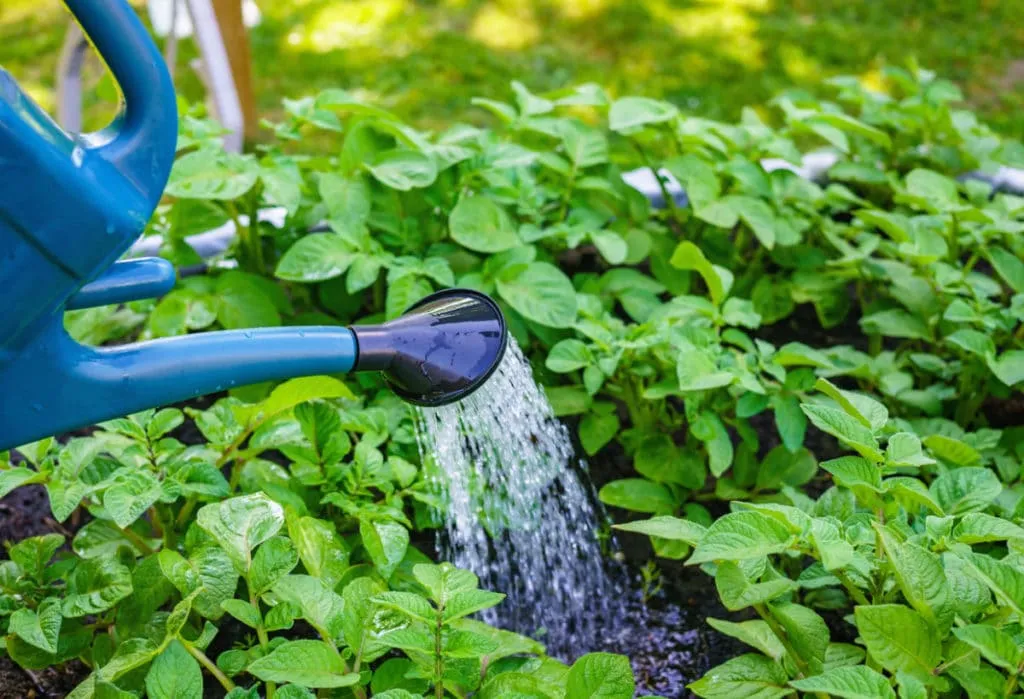
Water potatoes at least three times during growth: first 30 days after planting, then during budding, and after flowering.
Increase frequency in hot, dry weather. Use at least 3 L of warm water per plant, preferably in the early morning or evening.
Fertilization
Fertilize in stages, avoiding excess nutrients that could harm plants.
Stages:
- During budding and flowering, apply phosphorus and potassium fertilizers. Mix 15 g of superphosphate and potassium sulfate in 10 L of water. Use 1 L per m².
- Three weeks before harvest, apply a mineral-organic mix: 25 g superphosphate and 250 mL manure in 10 L water.
The final fertilization is crucial for storage quality.
Weeding and Hilling
Loosen soil after watering or rain to improve aeration. Weeding keeps beds clean.
Hilling promotes root growth and increases tuber formation.
Hill plants three times:
- When shoots reach 10 cm;
- During bud formation;
- At flowering (shoots ~20 cm tall).
If plants sprawl, hill them carefully to avoid root damage.
Disease and Pest Control
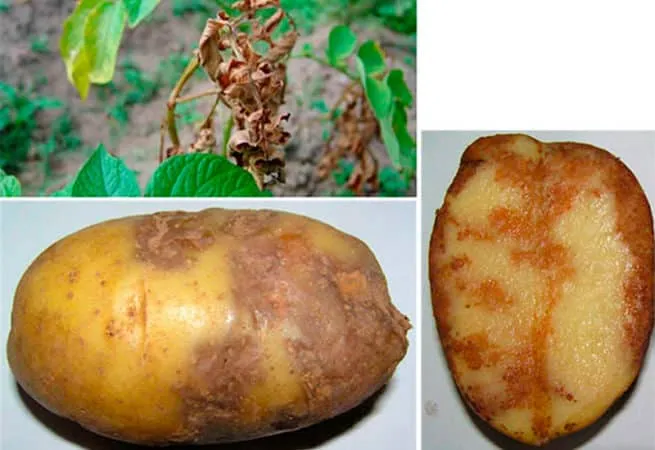
Common potato diseases and treatments are listed below.
| Disease | Symptoms | Treatment |
| Silver scab | Brown spots turning silvery; wrinkled skin. | Post-harvest, treat with Maxim. For prevention, treat seed potatoes with Quadris. |
| Late blight | Brown leaf spots with gray mold. | Spray with Fosphite or Revus at first signs. |
| Black scurf | Dark spots, rotting tubers. | Use Maxim; pre-plant treatment with Titus. |
Preventive measures:
- Crop rotation;
- Using high-quality seed potatoes;
- Timely harvesting.
Common pests include Colorado beetles and wireworms. Control them with Spinosad or Karate Zeon.
Growing Challenges
Main challenge – improper fertilizer use. Avoid excess nitrogen; prioritize organic fertilizers during autumn soil prep.
Harvest and Storage
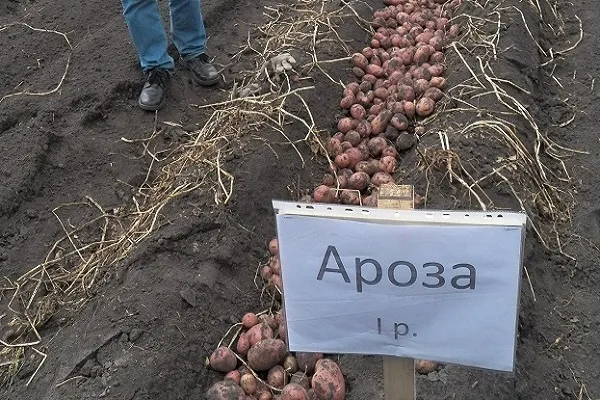
Harvest in mid-to-late July. Wilting foliage indicates maturity. Mow foliage a few days before harvest to prevent late blight and boost tuber nutrients.
Storage and Shelf Life
A key advantage is long shelf life. Dry tubers before storing in ventilated crates.
First 10-14 days: store at +18 °C, then reduce to +2 °C. Humidity: 80%.
Tip. Regularly check stored potatoes and remove spoiled ones.
Tips from Experienced Growers
Since Arosa is low-maintenance, experts recommend:
- Timely soil preparation;
- Balanced fertilization, watering, and post-watering aeration;
- Crop rotation: plant after cucumbers, greens, or beets.
Reviews of Arosa Potatoes
Thomas, 42, Bordeaux: "Arosa’s main advantages are easy care and high yield. I’ve grown it commercially for over 4 years. Unlike other varieties, it resists viruses and doesn’t need irrigation, reducing labor costs."
Sophie, 58, Warsaw: "A neighbor recommended Arosa. Very easy to grow – I harvested at least 3 kg per m² of uniform tubers. Stored well all winter in my cellar."
Conclusion
Arosa – a relatively new, high-yield, disease-resistant variety. Low-maintenance, with neat, uniform tubers. Stores well long-term. Use nitrogen fertilizers moderately, follow best practices, and enjoy a bountiful harvest!







